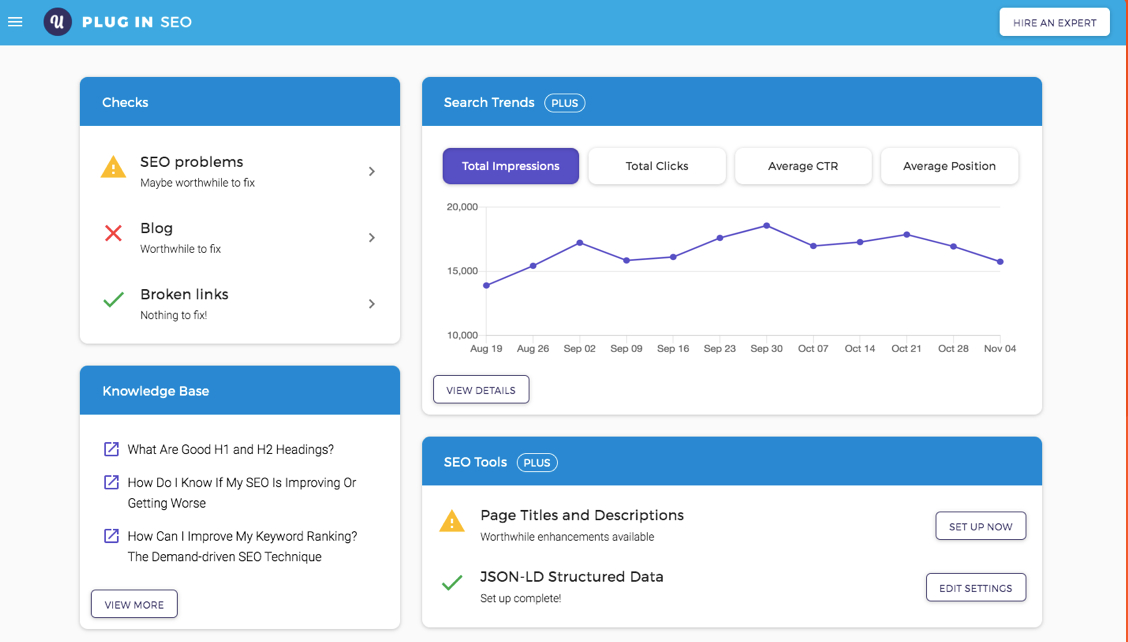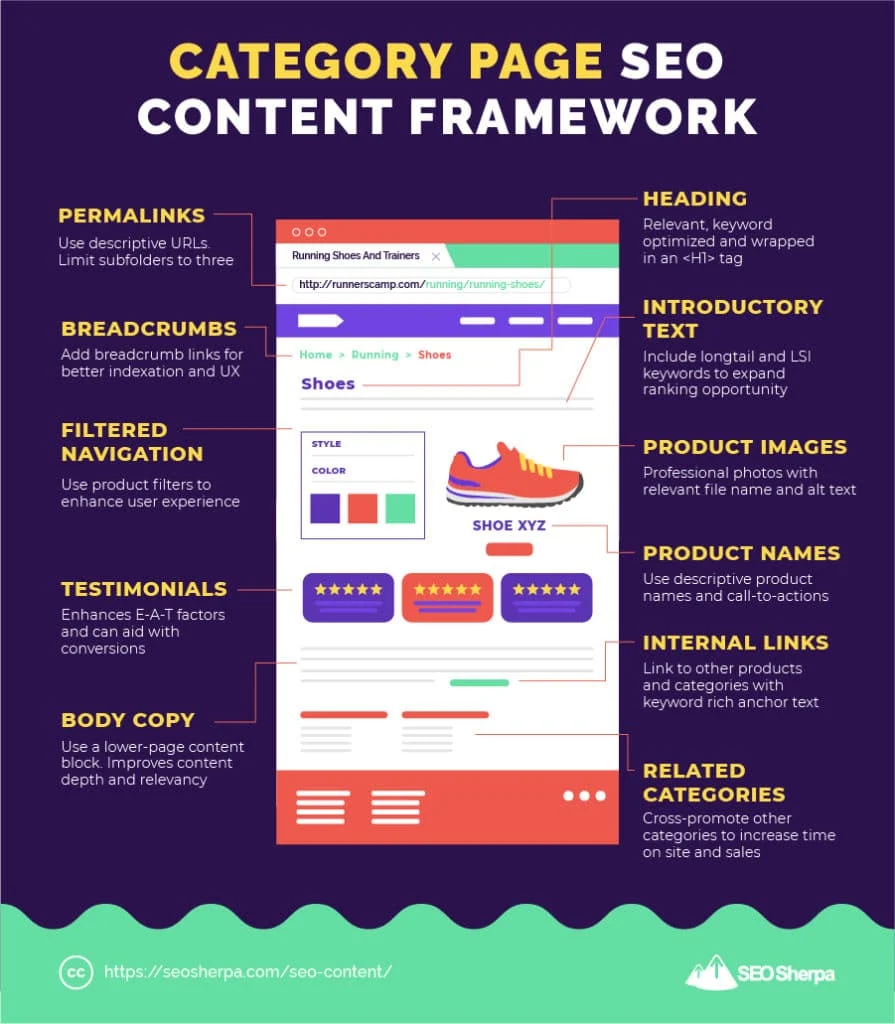What you will learn?
What is Shopify SEO?
Shopify SEO is a process of optimizing your e-commerce website for search engines that are built using Shopify CMS.
Shopify being an exclusive E-Commerce Content Management System comes loaded with features that are different from other CMS that are out there and that is what makes Shopify SEO an interesting topic to dig deeper into and explore opportunities that can help you optimize your store for more search visibility.
In the E-Commerce Market Landscape Shopify is no joke; here are
some stats worth checking out
- Shopify holds a 20% market share of all e-commerce platforms (source)
- More than 1 Million Businesses currently use Shopify (source)
How is doing SEO different on Shopify in comparison to other Platforms?
example.com/products/yourproducts
example.com/collections/subcollection/products/yourproducts
Shopify does not provide log files as of yet, considering that it hosts your Shopify stores over its server.
Considering the above differences as an SEO you have to think about all the tech stack changes and configurations that you will need to set in place to boost the organic visibility of your store.
Shopify SEO Tips You Will Need to Survive in the SERPs
1. Dealing with Duplicate Product Pages
example.com/products/yourproducts
example.com/collections/subcollection/products/yourproduct
Shopify is kind enough to canonicalize the longer version of the product page to the shorter one. But we all know that Canonicals are just hints for Google, they are not directives.

To make matters worse, Shopify by default internally links the canonicalized versions of Product Landing Pages in the collection pages instead of the canonical version of the page.
As a result, both Canonical & Canonicalized versions of the pages remain indexed on the SERP which massively wastes the crawl budget and creates content cannibalization issues.
Imagine having a large e-commerce store having >10K Product Landing pages, the situation would be much direr then.
But thankfully there is a solution to this.
It is possible to edit the Shopify liquid configuration file and keep just one version of the product page (preferably a shorter one) and have the shorter version linked across the collection pages.
You can then further go ahead and set redirections from the longer version to the shorter. It’s always best to set this configuration at the start of the project to save the hiccups in Google Search Console caused by restructuring a well-established website.
How do we set the configuration though?
To set this configuration you have to go to
Themes > Customize > Theme Actions > Edit Code > Snippets > product-grid-item.liquid:

In the above example, you can a large e-commerce website that has >700 product landing pages, and yet neither of these pages is the long collection, sub-collection product URL. All the URLs are clean short URLs. This explains that it can be done and can help you win big just by doing this one optimization successfully.
2. Dealing with Internal Links to Canonicalized Pages
[the pink & dark pink dots denotes either canonicalized page or 3XX pages]
This is what Shopify can do to your e-commerce store if you don’t take control over your internal linking.
Shopify is configured in a way to link out all the canonicalized versions of the product landing pages in the collection pages instead of the canonical version of the page.
To an extent SEOs can control crawling but controlling indexing is another thing, when Google Bot discovers canonicalized pages as internal links they can easily see them as pages worth indexing, and as a result, both versions remain indexed on SERP and your internal linking efforts ends up doing more harm than good.
Not only do you have to fix the product URL structure & set redirects but you also have to configure collection pages to add links to the canonical version of the product pages.
BTW, this is how the crawl diagram looks like for the Shopify site that doesn’t have canonicalized version of the pages linked in collection pages.
3. You can edit robots.txt now & what can you do to help SEO
Shopify is a CMS that is built to be used by non-techies. You don’t have to be a developer to be able to make use of Shopify.
By default, Shopify comes with various robots.txt commands that greatly help with controlling the crawling by search engine user agents.
Here are some commands that come pre-configured.
SEOs used to be frustrated earlier as Shopify didn’t allow making changes to the Robots.txt file but as of June 2021 you can make changes to the Robots.txt file.
In order to make changes to the robots.txt file, you are gonna have to create a robots.txt.liquid file.
In order to make that file, you have to do the following
- Log in to your Shopify admin area
- In the left sidebar, go to Online Store > Themes
- Choose Actions > Edit code
- In “Templates”, select the “Add a new template” link
- Find the left-most dropdown and choose “robots.txt”
- Choose “Create template”
Having the ability to edit robots.txt you can now choose to allow crawling for certain filters that you want indexed to grab the search opportunity.
4. Bulk NoIndex & Use Cases
Shopify’s configuration file allows you to bulk noindex certain sets of pages; the most common reason why you would want to do this is to control the indexing of faceted navigation parameter pages.
To do the same you will have to edit theme.liquid file to add the noindexing rules in the head section.
Below is the example template for noindexing the multiple tag pages that add little to no value
{% if template contains 'collection' and current_tags %}
{% else %}
{% endif %}Below is the example template for noindexing search string pages
{% if template contains 'search' %}
{% endif %}Template for noindexing a specific page
{% if handle contains 'page-handle-you-want-to-exclude' %}
{% endif %}Instead of installing a Shopify App that takes care of this thing and potentially slowing doing your site speed, it’s better to leverage coding to noindex pages based on rules and do it at scale.
Just like robots.txt, one of the common use cases for NoIndex is to prevent the indexing of filter pages.
5. Implementing Structured Data Markup
There are different ways to implement Schema Markup on the Shopify website, you can add a new snippet in the configuration and incorporate Schema or use plugins to do that.
There are some amazing Schema Plugins like Schema Plus; this one Schema plugin will take care of all sorts of Schemas that you may need.
It is built by Google engineers hence it adds only those properties in the schema that Google supports. It covers different schemas like Product Schema, FAQ Schema, Breadcrumbs Schema, and more.
6. Content Optimization on Product & Collection Pages
It doesn’t go without saying that Product and Category pages need content optimization efforts to improve their organic visibility.
Often we end up relying on product details as shared by manufacturer and distributor and that is what gets displayed on Product Landing pages and category pages.
But there are more optimizations that can move the needle to an incredible extent. And it starts with expansive keyword research that guides the content optimization mapping across product and category pages.
Here is an amazing infographic on how you should optimize your product category pages.
Without the important optimizations, you cannot entirely control the keyword for which the said page should rank.
7. Dealing with Faceted Navigation
A great deal crawl budget waste that occurs because of Faceted Navigation filter parameters are taken care of by Shopify default robots.txt
But that doesn’t put a full stop to it.
Having filter pages indexed cannot necessarily be a bad thing, for certain sets of filters there can be search opportunities that can be leveraged. A full-throttle keyword research can highlight these opportunities that are lying dormant.
Based on the research you need to make changes to the robots.txt file and canonicalization.
It’s important to note that by default Shopify canonicalizes back to parent collection pages when you apply filters. But you can change this if you want to meet an end that requires the page to be indexed. In that use case, you will have to use self-referring canonicals on certain filters to gain those opportunities.
The Essential Shopify SEO Checklist

The Essential Shopify SEO Apps that you can’t live without
1. Plug In SEO
Plug In SEO is your all-in-one SEO Plugin. Think of it as Yoast. Just like Yoast, this plugin takes care of various aspects of SEO.
It takes care of things like
- Schema Markup
- Templates to edit meta titles & descriptions in bulk
- Fix Headings, Image ALT tags, Filenames
- Detect & fix broken links/404 pages
- Google Search Console integration
- Keyword Tool & Suggestions
- SEO For product, collection, home & blog pages
- Periodic SEO health check report
- Supports Multilingual/Non-English Language SEO

At a glance, you can see the search trends, SEO issues, and action items.
2. Schema Plus
Schema Plus is an amazing Schema Plugin for Shopify stores that takes care of marking up pages with structured data throughout your e-commerce store.
It comes loaded with different types of schema like Product Schema, Breadcrumb Schema, FAQ Schema, and more. This plugin will allow you to gain more control over the schemas that you want to use.
3. Crush.pics
Image Optimization is a serious consideration for any e-commerce store. Because E-Commerce websites, in general, use a disproportionate amount of visual content which makes the webpages bulkier; thereby negatively affecting the speed at which the pages load.
Crush.pics Shopify app simplifies your image optimization requirements. Instead of using a third-party website like Tinyjpg to compress images individually for each image; Crush.pics does the heavy lifting without you having to put a lot of manual effort into it.
It is incredible automation that takes care of compressing images and renaming the file names at the same time.
In what aspects is Shopify better than WooCommerce?
- Shopify comes with a robust host which has little to no major host issues to your e-commerce store
- Shopify comes with an in-built CDN not requiring you to separately invest in a third-party CDN
- Exclusive E-Commerce Themes that are beautiful and in-sync with user experience and performance optimization
- Shopify takes care of security and is way more secure than WordPress or WooCommerce
- You can create your e-commerce store without any coding experience using just themes
- The support is the best that there is
- Comes with a pre-configured robots.txt file that is workable for non-techie ecompreneurs launching small stores.
- Multi-channel integration like Amazon, Facebook, eBay, and Pinterest as a built-in feature
FAQ
1. How to noindex entire subfolders on Shopify?
Shopify configuration files come with bulk editing features that allow you to noindex entire subfolders. You can use a template like this to achieve that.
{% if template contains 'collection' and current_tags %}
{% else %}
{% endif %}2. Is Shopify bad for SEO?
Shopify has its downs but it isn’t inherently bad for SEO. If you configure the tech stack to coordinate with your SEO goals then Shopify can work wonders.
3. Is Shopify bad for larger e-commerce stores?
Considering all things, Shopify doesn’t seem like the best platform for large e-commerce stores that nests millions or thousands of products.
There are certain things that can obstruct the growth of such huge stores. Things like Shopify aren’t highly customizable, you cannot choose a different or dedicated host for more availability.
There are such things because of which it’s not the best platform for large stores.
4. In what ways is Shopify better than Magento?
Shopify has multi-channel selling capabilities you can cross-sell via CMS on Facebook, Amazon, and eBay. It comes with responsive themes which makes the process of building stores a cakewalk.









